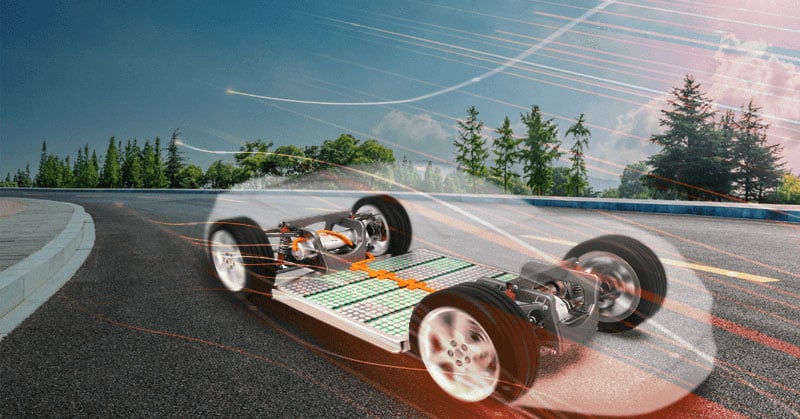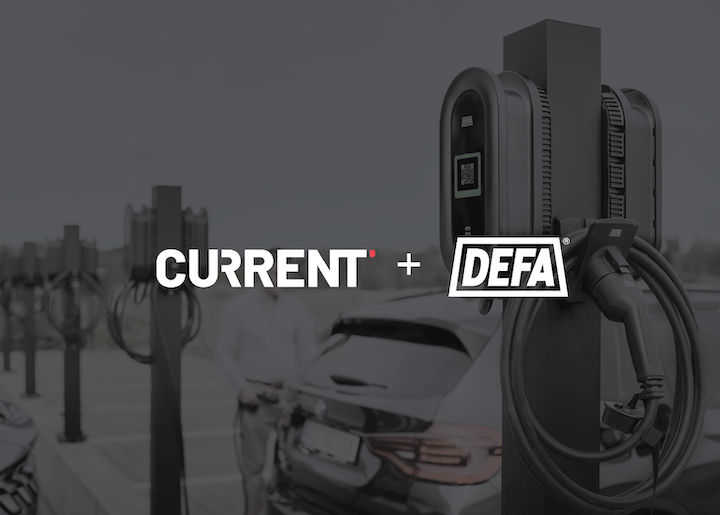
With battery-electric vehicles becoming more mainstream, this opens up a wealth of opportunities for energy management. Vehicle-to-Grid (V2G) is one such example of this with EVs able to send power back to the grid to power homes or ease the strain at times of high electricity demand.
Current Eco, an intelligent charge management platform, started looking into V2G in 2019 in Norway. “Our first official launch with V2G was in 2019,” says Åsmund Møll Frengstad, COO of Current Eco. “We used a Nissan Leaf to successfully provide power and electricity to an entire college campus in Norway.”
This was just the start of things, as Frengstad explains: “We showcased what we call an ‘energy Island’, where we cut the building off from the grid and just used the battery of the EV as the power supply – this is one typical use case of V2G.”
But the applications of V2G go far beyond powering a single building. Vehicle-to-Everything (V2X) uses the battery from a car for more than just giving back to the grid, it could potentially power anything – this could include homes, businesses, portable devices, and even other vehicles.
Current’s involvement in the campus project is ongoing, with the aim to understand how people can share the energy from their cars. The information gained from this project has prompted Current to join forces with Siemens and a Norwegian charge point manufacturer to develop a V2G charger. “We are using these chargers to reduce the peak cost for facility operators,” says Frengstad.
“We are also looking to do what we call vehicle-to-vehicle. Say there are three cars standing beside each other: instead of taking energy from the power grid, we're just borrowing energy from car one to car two. Then car three could potentially charge from the grid. In combination, everybody gets the amount of energy they need, but the consumption from the grid is lower.”
Those critical of EVs are the first to suggest that, with mainstream uptake, the electricity grid won’t be able to cope with the added strain. This is something that’s being taken into consideration in countries around the world. Whether it’s the UK Government creating an EV Energy Taskforce to research the effect EVs will have on the aging National Grid, or companies such as Current looking into electricity demand in the Nordics.
The applications for V2G may differ in each country as Frengstad explains: “For Norway, it's all about peak shaving. The vehicle that is connected can send energy back and we will have much more stable pricing. For Germany or the UK, I would say it’s almost a necessity to adopt V2G because of the grid capacity.”
Where there’s a capacity issue – such as in the UK or Germany – more needs to be done to prepare the grid for mass uptake of EVs. This isn’t necessarily because the capacity isn’t there, but because it won’t be available to everyone at once. For example, if everyone comes home from work and plugs in their cars at the same time, this could cause a problem.
“Building a system that could stand up to this is stupid or, at best, would be insanely expensive,” says Frengstad. “But building a system where we can utilize spare capacity and already-stored energy, you could probably do this with the same functionality with a cost reduction of 80%.
“To put it into Norwegian terms, in a city of 50,000 people, if all the houses and apartments in that city have an EV, the costs of investment into the local grid could be £200 million (240m EUR) at least. If you apply smart charging, however, you could reduce the investment to zero. This is without picking up energy from the car itself (as with V2G), but just being able to control the rate of EV charging.”
Solar and wind are great renewable sources of energy but, unfortunately, it’s not always windy or sunny when we need power — this results in negative energy pricing. EV batteries can store the excess power from the overproduction of renewable energy and release it back to the power grid when energy is expensive and we need more. Frengstad says: “This will reduce the need for investment in the grid, creating more stable power prices while giving a new revenue stream to owners of facilities and EVs. This could have a value of hundreds of millions euros annually just for the European market.”
When V2G is added alongside these smart charging capabilities, it’s able to cut peak demand in Norway and keep energy prices low for consumers. In the UK, however, it could be the key to mass adoption. “The UK National Grid has a much lower capacity. So if you do vehicle-to-grid, you might reduce the investment needed by 90%, which is huge.”
Current continues to invest its resources into V2G projects as it understands just how powerful this technology can be in Europe and beyond. At one of its locations, for example, there are 150 22 kW chargers, if all these were consuming their full power at once, the grid would be in trouble but Current uses load balancing to even out consumption and lessen the strain on the grid.
“An EV is just a battery on wheels, let's not pretend it's something else,” says Frengstad. This means the applications for energy sharing in this way could be limitless. Taking experience from its ‘Energy Island’ trials in Norway, Current continues to explore these possibilities, using EVs as a power source as well as a form of transport.




